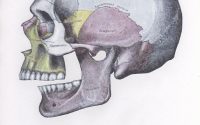Evaluating Cold Water Immersion and Percussive Massage for Post-Exercise Recovery
Effective recovery is essential in athletic training to balance the demands of exercise-induced muscle damage and optimize performance. Cold water immersion is widely used as a recovery strategy, while newer methods, such as percussive massage devices, are gaining popularity despite limited evidence supporting their effectiveness. This study compares the efficacy of cold water immersion, percussive massage, and passive rest on recovery following exhaustive eccentric exercise, with a focus on performance outcomes, muscle soreness, and stiffness.
A study publsihed in Frontiers in Physiology investigated the efficacy a single 12-minute session of percussive massage on post-exercise performance recovery compared to cold water immersion and passive rest.
Methods
Thirty-four healthy and physically active adults participated in this randomized controlled trial. Participants were divided into three groups: cold water immersion, percussive massage, and passive rest. Each recovery intervention lasted 12 minutes. The cold water immersion group submerged their lower extremities in water maintained at 11 degrees Celsius. The percussive massage group received treatment using a massage gun at a frequency of 40 Hertz, while the passive rest group lay in a supine position without any active treatment.
Performance was assessed through squat jumps, countermovement jumps, and drop jumps. Additional measurements included muscle soreness, stiffness, skin temperature, leg volume, and creatine kinase activity. Data were collected at baseline, immediately after exercise, immediately after recovery, and at 24, 48, and 72 hours post-exercise.
Key Findings
The study found that neither cold water immersion nor percussive massage significantly improved performance recovery compared to passive rest over the 72-hour period. Cold water immersion resulted in an immediate decline in jumping performance, likely due to its effects on nerve conduction velocity and tissue stiffness caused by cold exposure. While percussive massage significantly reduced perceived stiffness immediately after treatment, it did not improve other performance metrics.
Both cold water immersion and percussive massage modestly reduced creatine kinase levels and muscle soreness over time, but these effects were not significantly different from those observed with passive rest. There were no significant differences between the groups in terms of changes in leg volume.
Discussion
Cold water immersion is known to reduce muscle soreness and inflammation in some contexts, but this study found it inadequate for improving dynamic muscle power recovery. Its immediate negative impact on performance suggests limitations as a short-term recovery tool. Variability in individual responses and the role of inflammation in muscle repair might explain its inconsistent efficacy.
Percussive massage demonstrated potential for reducing subjective stiffness, potentially due to its ability to disrupt muscle cross-bridges through mechanical stimulation. However, it did not translate into objective performance improvements, aligning with other studies that question its effectiveness for recovery after eccentric exercise.
Recovery strategies often exhibit high variability in individual responses. Factors such as training status, psychological perception, and the type of exercise performed influence outcomes. This highlights the importance of personalized recovery approaches.
Practical Implications
Cold water immersion may not be suitable for immediate recovery needs as it negatively impacts muscle function and nerve conduction in the short term. Athletes should explore alternative strategies for dynamic power restoration. While percussive massage can reduce feelings of stiffness, its overall impact on recovery performance is limited. Passive rest showed comparable recovery outcomes, suggesting that simple, low-cost strategies may suffice in some cases.
Limitations
The specificity of this study to eccentric exercise limits its generalizability to other types of athletic activities. The high variability in individual responses to treatments highlights the need for larger studies and more personalized recovery assessments.
Conclusions
Neither cold water immersion nor percussive massage provided significant benefits over passive rest for performance recovery within 72 hours of strenuous eccentric exercise. While cold water immersion remains a popular method, its immediate negative effects on performance suggest caution. Percussive massage demonstrated some benefits for perceived stiffness but lacked overall recovery improvements. Recovery strategies should be tailored to individual needs, and future research should focus on optimizing personalized protocols to enhance performance and reduce the risk of injuries.
